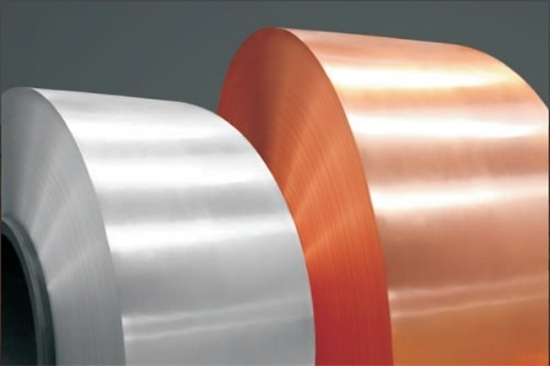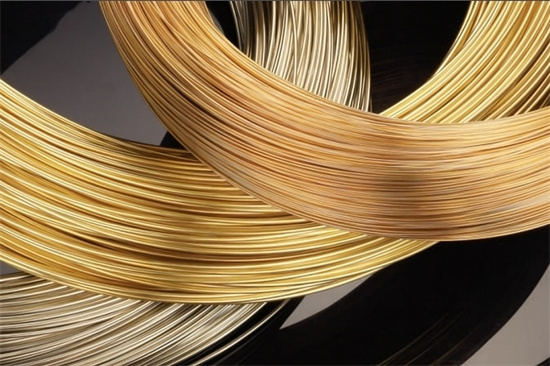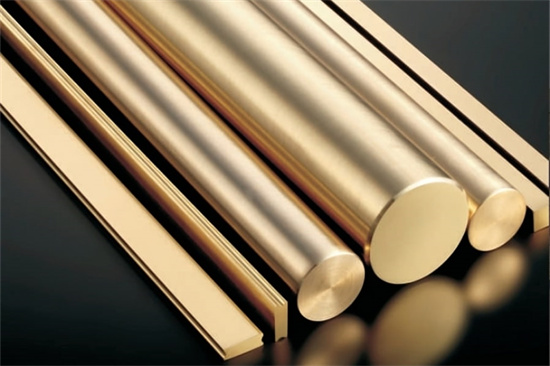


高可塑性洋白:耐久性と成形性のための最良の合金
低いMOQ
さまざまなニーズに対応するため、最低注文数量を少なくしています。
OEM & ODM
顧客独自のニーズに応えるため、カスタマイズされた製品とデザインサービスを提供する。
十分な在庫
迅速な注文処理と、信頼できる効率的なサービスの提供。
顧客満足度
顧客満足を核とした高品質の製品を提供する。
この記事を共有する
目次
冶金の世界では、 高可塑性洋白 は、その汎用性と強度で知られる重要な素材として際立っています。その名前から銀を含む合金と思われるかもしれませんが、実際にはニッケル、銅、亜鉛の組み合わせで、実際の銀の含有量はありません。可塑性の高い洋白は、その可鍛性、耐食性、そして高いコストをかけずに銀を模倣した美的魅力のために高く評価されています。この包括的なガイドでは、その組成、特性、用途など、この注目すべき合金のあらゆる側面を探ります、 価格設定などなど。
高可塑性洋白の概要
まずは概要から。 高可塑性洋白 は、銅、ニッケル、亜鉛を主成分とする合金である。この合金の特徴は 成形性 (可塑性)であるため、楽器から工業部品まで幅広い用途に適している。高い可塑性とは、材料が壊れることなく大きく変形する能力のことで、複雑な形状に成形することを可能にする。
高可塑性洋白の主な特徴:
- 高い可鍛性:複雑なデザインに簡単に成形できる。
- 耐食性:湿気や化学薬品にさらされる環境に適している。
- 美的アピール:銀のような光沢があり、装飾用として人気がある。
- 非磁性:純ニッケルとは異なり、この合金は非磁性であるため、特定の用途に有用である。
- 良好な作業性:機械加工、はんだ付け、成形が容易で、製造コストを削減できる。
| プロパティ | 詳細 |
|---|---|
| 主な構成 | 銅、ニッケル、亜鉛 |
| シルバーコンテンツ | 0% |
| 耐食性 | 特に湿気の多い環境では高い |
| カラー | シルバーのような外観 |
| 作業性 | 鋳造、機械加工、成形に最適 |
| アプリケーション | 宝飾品、楽器、装飾品、工業部品 |
| 密度 | 約8.7 g/cm³ |
| 融点 | 1000°C - 1050°C |
| 磁気特性 | 非磁性 |
高可塑性洋白の組成と特性
高可塑性洋白の正確な組成は、グレードや用途によって異なりますが、主成分は銅、ニッケル、亜鉛です。銅、ニッケル、亜鉛です。銀を使用しないことで、この合金の特徴である外観を保ちながら、よりお求めやすい価格になっています。
詳細な構成内訳
銅、ニッケル、亜鉛の比率は、強度、耐食性、延性など特定の特性を高めるために調整することができます。典型的な組成は次のようなものである:
| エレメント | パーセント(%) |
|---|---|
| 銅(Cu) | 55-65% |
| ニッケル(Ni) | 10-25% |
| 亜鉛 | 15-30% |
物理的および機械的特性
| プロパティ | 価値 |
|---|---|
| 引張強度 | 400-600 MPa |
| 降伏強度 | 200-300 MPa |
| 硬度 (ブリネル) | 80-150 HB |
| 電気伝導率 | 低い(銅の導電率の5~8%程度) |
| 熱伝導率 | 中程度(スチールよりは良いが、純銅よりは低い) |
| 破断伸度 | 20-35% |
この合金の高い塑性は、破断する前に大きな変形に耐えることができることを意味し、耐久性と成形性が重要な産業で人気のある選択肢となっている。
高可塑性洋白の用途
高可塑性洋白は、そのユニークな特性により、様々な産業で使用されています。ジュエリーのような審美的な目的であれ、工業用途での機械的強度であれ、この素材は驚くほど多用途です。
高可塑性洋白の一般的用途
| 申し込み | 詳細 |
|---|---|
| 楽器 | フルート、トランペット、サクソフォンなどの管楽器に使用される。 |
| ジュエリー | シルバーのような外観と低刺激性から、リング、ネックレス、ブレスレットに人気。 |
| 装飾品 | ドアの取っ手、額縁、彫刻などの装飾品によく使われる。 |
| マリン・コンポーネント | 耐食性に優れているため、ボルト、スクリュー、金具などの船舶用金具に適している。 |
| 産業用部品 | 強度、耐食性、成形性の組み合わせが要求される機械部品に使用される。 |
| コインとメダル | 耐久性と美的魅力のため、通貨によく使われる。 |
高可塑性洋白の仕様、サイズ、規格
高可塑性洋白は、シート、ロッド、ワイヤー、チューブなど様々な形状で入手可能です。それぞれの形状は、その用途で最適な性能を発揮するために、特定の業界基準を満たす必要があります。プロジェクトの要件に応じて、適切なサイズとグレードを選択することが重要です。
標準サイズとフォーム
| 形状 | 利用可能なサイズ | 業界標準 |
|---|---|---|
| シート | 厚さ:0.3mm~5mm | ASTM B122 |
| ロッド | 直径:1mm~100mm | ASTM B139 |
| ワイヤー | 直径:0.1mm~5mm | ASTM B206 |
| チューブ | 直径:10mm~200mm | ASTM B466 |
地域や用途によって規格が異なるため、メーカーやサプライヤーに相談し、現地の規制に準拠していることを確認することが重要である。
高可塑性ニッケル銀のサプライヤーと価格
高可塑性洋白は広く使用されているため、世界中に数多くのサプライヤーが存在します。価格は、市場の状況、合金の組成、注文数量によって変動します。一般的に、高可塑性洋白はスターリングシルバーのような貴金属よりは手頃ですが、基本的な銅合金よりは高価です。
主要サプライヤーと価格見積もり
| サプライヤー | 所在地 | kgあたりの価格 | 最小注文数量 |
|---|---|---|---|
| ABCアロイ株式会社 | アメリカ | $25 – $35 | 100キロ |
| ユーロメタルズ社 | ヨーロッパ | $22 – $32 | 50キロ |
| メタルワークス・インターナショナル | アジア | $26 – $36 | 200キロ |
| アライド・メタル・ディストリビューター | グローバル | $24 – $34 | 500キロ |
価格は、合金の等級、サプライヤーの所在地、標準サイズか特注サイズかによって大きく異なる可能性があることに注意する必要があります。
高可塑性洋白の長所と短所
高可塑性洋白を他の素材と比較する際には、その長所と短所の両方を考慮することが重要です。このセクションでは、この合金があなたの特定のニーズに適した選択であるかどうかを判断するのに役立つ詳細な比較を提供します。
メリットとデメリット
| メリット | デメリット |
|---|---|
| 高い成形性 - 複雑な形状に最適 | 導電率の低下 純銅に比べて |
| 耐食性 過酷な環境下 | より高価 基本銅合金より |
| 美的アピール 銀に似ている | それほど強くない ステンレス鋼として |
| 非磁性 - 特殊用途に最適 | より重い アルミニウム合金より |
| 良好な加工性 製造プロセス用 | 限られた耐熱性 超高温 |
高可塑性洋白に関するFAQ
| 質問 | 答え |
|---|---|
| 高可塑性洋白とは? | 銅をベースにニッケルと亜鉛を加えた合金で、可鍛性と銀のような外観で知られる。 |
| 高可塑性洋白は耐久性がありますか? | そう、耐久性と耐食性に優れ、さまざまな用途に最適なのだ。 |
| ジュエリーに使えますか? | もちろん。その銀のような外観と低アレルギー性は、ジュエリーに人気があります。 |
| スターリングシルバーと比べてどうですか? | スターリングシルバーの外観を模倣しながらも、より手頃な価格と耐久性を実現している。 |
| 海上での使用に適していますか? | そう、耐食性に優れているため、海洋環境には最適なのだ。 |
| はんだ付けや溶接は可能ですか? | そう、高可塑性洋白は、はんだ付けや溶接が容易で、製造に汎用性がある。 |
| 耐えられる温度は? | 中程度の温度には対応できるが、極端に高温の環境では性能を発揮できない可能性がある。 |
結論
高可塑性洋白 は、銀の美しさと銅、ニッケル、亜鉛の強度と耐久性を兼ね備えた注目の合金です。その高い成形性は複雑なデザインに理想的であり、耐食性は様々な環境下で長時間の性能を保証します。宝飾品から工業部品まで、この万能合金は様々な産業で人気のある選択肢であり続けています。
スターリングシルバーに代わる手頃な価格の素材をお探しの方にも、工業用の耐久性のある素材をお探しの方にも、高可塑性洋白は、美観、強度、費用対効果の完璧なバランスを提供します。ニッケルシルバーの組成、特性、用途、価格などを理解することで、それぞれのニーズに合った最良の選択をすることができます。
最新価格
Met3DPについて
製品カテゴリー
ホットセール

3Dプリンティングと積層造形用金属粉末








